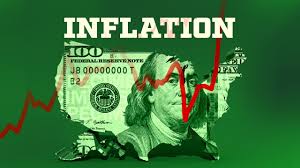MarketWatch
The numbers: A key gauge of U.S. inflation rose 0.6% in May largely due to the higher cost of gas and food, but there were renewed signs that price pressures were starting to ease.
The increase in the so-called personal-consumption price index was triple the 0.2% gain in April.
But a narrower measure of inflation that omits volatile food and energy costs, known as the core PCE, rose by relatively modest 0.3% for the fourth month in a row. That was below Wall Street’s 0.4% forecast.
The rate of inflation over the past year was unchanged at 6.3% in April. The yearly rate has backed off a little after touching a 40-year high a few months ago.
The core rate of inflation also slowed to 4.7% in the 12 months ended in May from 4.9% in April and a 40-year high of 5.2% in March.
What’s more, the inflation readings in the core PCE rate from February through May were the smallest since the end of 2020.
Unlike its better-known cousin, the consumer-price index, the PCE gauge takes into account how consumers change their behavior in response to higher prices. They might substitute cheaper goods for more expensive ones to keep their costs down, for example.
The Federal Reserve views the PCE index as the best barometer of inflation trends.
The CPI climbed to a yearly rate of 8.6% in May to mark the highest level since 1981. Americans have to buy a lot of food and gas, and until the prices of those staples fall, they are going to feel the pain of high inflation.
Big picture: The economy is slowing as consumers and businesses grapple with high inflation and rising interest rates. The Fed is raising rates rapidly to try to slow the economy and tame inflation
The Fed still has a lot of work to do to get inflation back to its pre-pandemic level of around 2%. And it’s far from clear the central bank can achieve a “soft landing” — economist lingo for reducing inflation while keeping the U.S. out of recession.
Looking ahead: The smaller increases in core inflation are “not the ‘clear and compelling’ evidence the Fed needs to shift to less aggressive rate hikes,” said senior U.S. economist Michael Pearce of Capital Economics. But it does mean inflation “is not quite as bad as you’d think by looking at the CPI figures alone,” he said.














